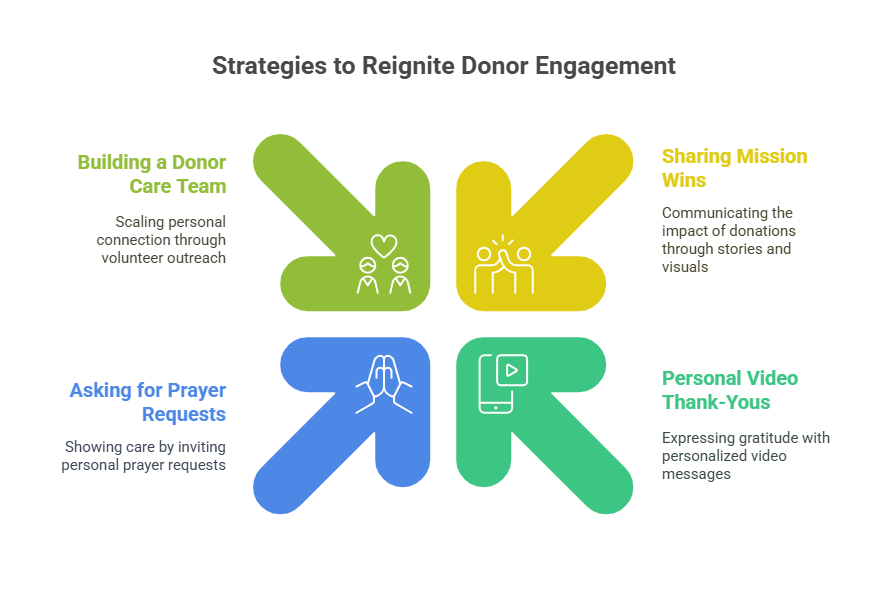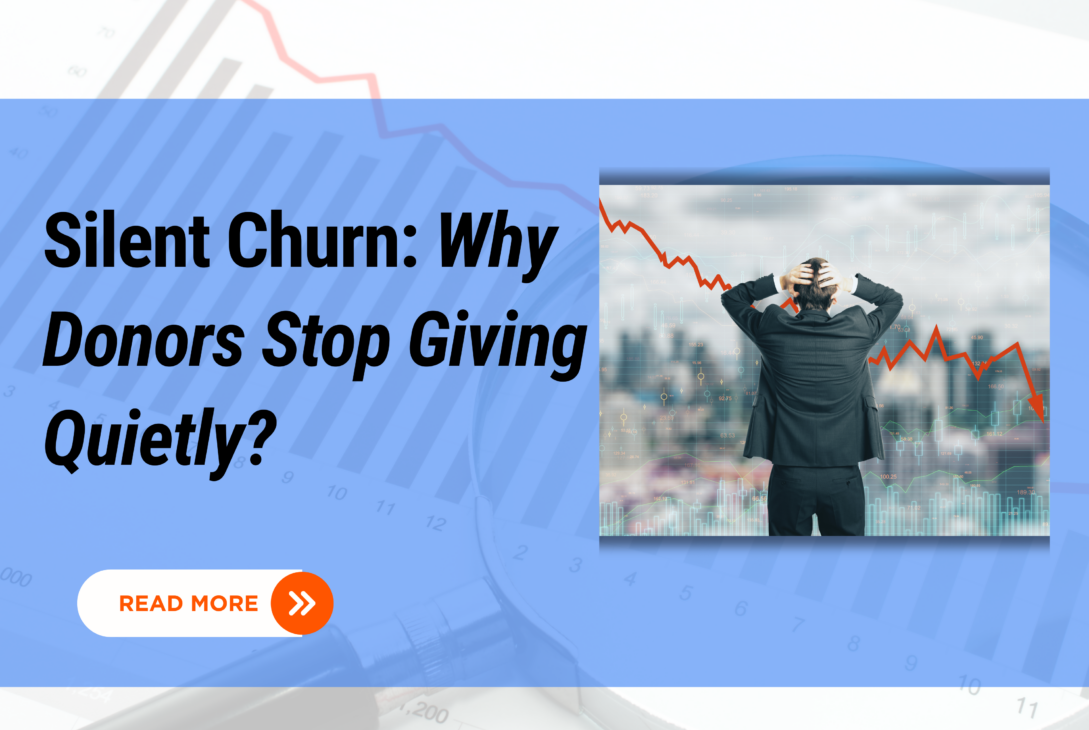Most donors don’t leave with a bang. They leave in silence, goodbye. No warning. No complaint. Just a quiet stop.
This is called silent churn, and it’s one of the biggest threats to your ministry’s funding. If you run a church, a Christian nonprofit, or a faith-based organization that relies on donors, this hidden problem might be costing you more than any failed campaign or outreach ever has.
What Is Silent Churn?
Silent churn is when donors stop giving, and you don’t know why. They don’t send an email or leave a note. They just vanish from your donor list. It’s not that they hated what you did. It’s not that you failed. Often, they still care.
But something changed. And no one noticed.
Example:
Mary supported your mission for two years. $50 every month. Then one day—nothing. No call. No message. No more donations.
This is silent churn. And it’s more common than you think.
Why Silent Churn Hurts More Than You Realize
Let’s break it down.
Getting a new donor can cost $100 or more. Keeping one costs way less. If a regular donor gives $50/month, that’s $600/year. Over 3 years? $1,800.
But if they leave after one year, you lose $1,200.
And here’s the kicker: replacing them with a new donor might cost you $100–$300 in outreach, ads, or events.
Silent churn = a slow leak in your bucket.
Your fundraising might look fine on the surface, but underneath, donors are slipping away quietly.
5 Reasons Faith-Based Donors Quietly Leave
1. They Feel Disconnected from the Mission
They give, but they don’t feel like they’re part of the story anymore.
2. They Don’t See Their Impact
No stories. No updates. Just more asks. Donors begin to wonder, “Is this doing anything?”
3. You Only Reach Out to Ask for Money
People want relationships, not transactions. If your only message is, “We need more,” they will quietly walk away.
4. Your Messages Feel Robotic
If your emails or letters feel like templates, donors tune out. They crave personal, heartfelt communication.
5. Life Changes and No One Notices
Donors move, switch jobs, and face struggles. They stop giving, not because they don’t care, but because no one followed up.
How to Spot Silent Churn Before It’s Too Late
Donors don’t always tell you when they’re drifting away. But the signs are there:
- They stop opening your emails
- They haven’t given in 60+ days
- Their giving frequency drops
- Their last donation failed, and you didn’t notice
What you can do:
- Set up donor engagement tracking
- Use your CRM to flag inactivity
- Build an “early churn” alert system
How to Spot Silent Churn Before It’s Too Late
Donors don’t always tell you when they’re drifting away. But the signs are there:
- They stop opening your emails
- They haven’t given in 60+ days
- Their giving frequency drops
- Their last donation failed, and you didn’t notice
- Engagement on your content declines (social media, blog, replies)
What you can do:
- Set up donor engagement tracking
- Use your CRM to flag inactivity
- Run quarterly churn audits
- Segment donors by activity level and tailor your follow-up
- Assign a retention role to someone on your team
4 Ways to Stop Silent Churn and Reignite Giving
1. Share Monthly “Mission Wins”
Use short stories, pictures, and video clips. Make the impact real. Let donors see their dollars in action. Bonus points if you include their first name in the subject line or header.
2. Send Personal Video Thank-Yous
Nothing fancy. A 30-second selfie video saying thanks can do wonders. If possible, mention what their last gift supported. Gratitude grows retention.
3. Ask for Prayer Requests
Show you care about them, not just their gift. Invite connection. Build spiritual intimacy. A single “How can we pray for you?” can revive a donor relationship instantly.
4. Build a Donor Care Team
Empower volunteers to contact or email five donors per week. Just check in. Say thanks. Ask how they’re doing. This scales personal connection and lets your donors feel seen.

What Healthy Donor Retention Looks Like
Good ministries don’t treat donors like ATMs. They treat them like partners.
- They know names and stories
- They reach out often with gratitude
- They listen, not just ask
Goal: Keep 60% to 70% of your donors yearly. If you’re below 50%, it’s time to act.
Silent Churn Audit Checklist: 7 Questions
- Do we track donor engagement monthly?
- Do we say thank you without asking for money?
- Do we share clear impact stories?
- Are our messages personal, not robotic?
- Do we check for failed gifts or inactivity?
- Do we follow up with first-time donors?
- Would I feel seen if I were one of our givers?
Bonus Tip: Ask a few lapsed donors, “What caused you to stop giving?” You might be surprised by what they say—and you’ll earn trust just by asking.
FAQs: Silent Churn and Donor Retention
What is silent churn in faith-based fundraising?
It’s when donors quietly stop giving without feedback or explanation. They simply disengage.
Why is silent churn more dangerous than regular donor loss?
Because it goes unnoticed. Without clear signals, you can’t fix the problem until it’s too late.
What are the signs that a donor is silently churning?
They stop opening emails, their giving becomes irregular, or a recurring gift fails and isn’t updated.
How can I reduce silent churn in my ministry?
Strengthen relationships. Share mission updates. Say thank you more often. Ask how you can pray for them.
What’s one thing I can do today to prevent donor drop-off?
Call or message a lapsed donor with a personal thank-you and a simple story about impact.
Final Thoughts
Silent churn is like a slow leak in a boat. If you don’t notice it, it will sink you.
However, with care, attention, and genuine connection, you can overcome it. You can keep your donors, strengthen your mission, and grow your impact.
Want help building a donor care system that lasts? Book a free strategy session.
donor management software donor retention easy fundraising ideas nonprofit fundraising
Last modified: June 25, 2025






















